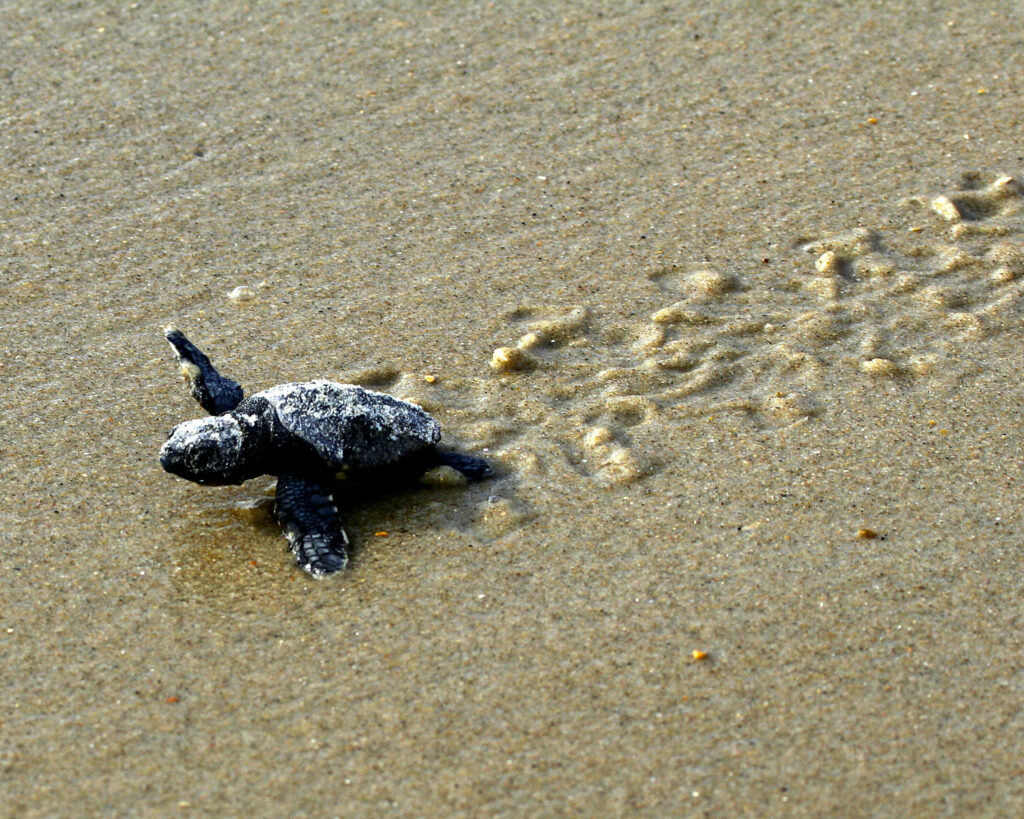
There are seven species of sea turtles that inhabit the world’s oceans. Six of the seven sea turtle species – all of them except the flatback – are present in U.S. waters, and are listed as threatened or endangered under the Endangered Species Act.
Sea turtles, which have been around for more than 100 million years, spend the majority of their lives in the ocean, but they do periodically come ashore to nest. Female sea turtles lay their eggs in the sand and then return to the ocean. Survival odds for sea turtle hatchlings are quite bleak. In fact, only one out of every 1,000 makes it to adulthood.
Research shows that both air and sand temperatures are critical for sea turtle hatchling development. Cooler temperatures produce larger, heavier hatchlings with more males. Hatchling size matters because larger hatchlings, which can move faster, are more likely to survive because they spend less time on risky beaches. But rising temperatures might shorten incubation periods, and erratic rainfall can disrupt growth, potentially affecting survival.
A new international study by researchers from Florida Atlantic University and the University of Tübingen in Germany found that fluctuating rainfall patterns have a greater impact than changes in air temperature on sea turtle hatchling development.
The results, which were recently published in the journal BMC Ecology and Evolution, reveal that the impact of rainfall varies between species. As climate change shifts rainfall patterns, the impact on sea turtle nesting sites suggests that global conservation strategies for some species – like loggerhead and green sea turtles – likely need to be updated.
**********
Web Links
Rain or Shine? How Rainfall Impacts Size of Sea Turtle Hatchlings
Photo, posted August 27, 2015, courtesy of USFWS/Orsulak via Flickr.
Earth Wise is a production of WAMC Northeast Public Radio
Leave a Reply